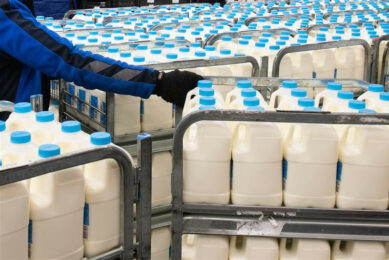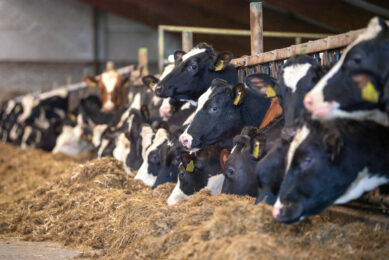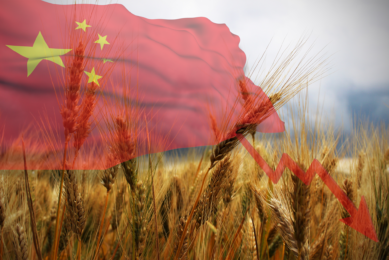‘Now it is time to yield results’
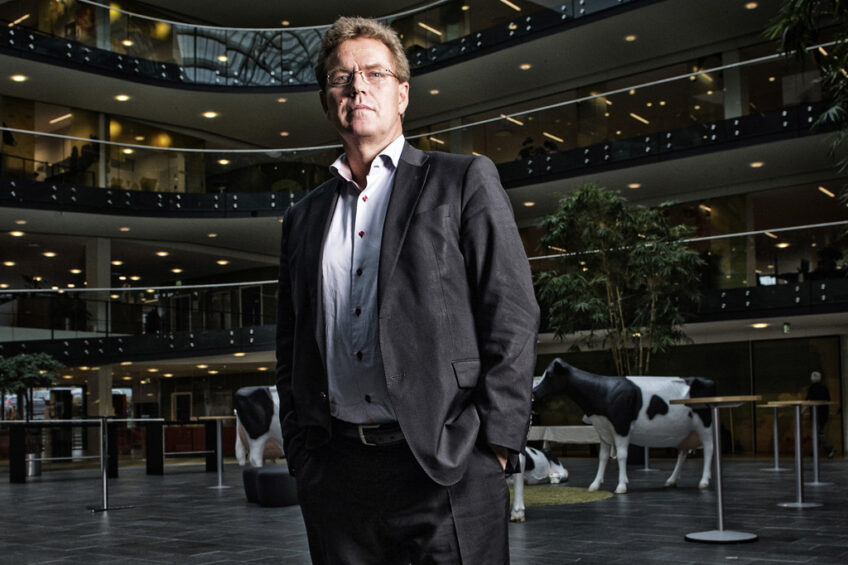
Arla aims for growth withing the EU. A strong presence on the European market offers the foundation for strong growth on the global market, says Arla CEO Peder Tuborgh. He firmly believes in the cooperative spirit. Not only as an administrative model for dairy enterprise Arla, which he leads for seven years now, but also as a foundation for cooperation, both internally and externally.
Arla collects milk from member farmers in six countries. All farmers receive one milk price, independent from other milk prices in the corresponding countries. The members don’t necessarily get the highest price, but certainly above-average. This should demonstrate all members share the same objective.
Why did Arla experience such a strong growth due to
mergers in the EU over the last few years?
“We believe in a strong European platform from which we can serve the world market. It is not for nothing that we invested billions in the European dairy industry for years. Our many investments in Great Britain make recruiting new members there a logical step. It also fits our nature to always seek new members. I see the positions we recently adopted in Germany as a new initiative. Germany’s dairy market is difficult and divided. However, we also see opportunities there.”
What is Arla’s identity?
“Our corporate identity can be summarised in two words: ‘good growth’, although these are not words we advertise with. According to us, four elements determine our identity: cooperative, responsible, natural and healthy entrepreneurship. The cooperative thought plays a key role and means more to us than merely a model of governance. It concerns collaboration, both within and outside the company. We own so many joint ventures, I have lost count.”
Don’t new markets outside the EU offer more possibilities?
“They do, but only if you have the resources at your disposal to use these possibilities. In total we collect 12,5 billion kilograms of milk. The aim is to turn part of this milk via innovations into products suitable for the global market. I don’t know whether I will as CEO face intercontinental mergers. In principle, it is possible. But there must be resemblances between the different cooperation models and the cost of milk. Also the differences in economic circumstances matter.”

Are you headed towards a certain amount of milk in 2020?
“No, collecting milk volume is not an end in itself. There are limits to growth of course. It is time to tread water, as a lot of strength is necessary to meet the increasing worldwide demand for dairy in a safe and reliable manner. Through innovation programs for instance, we want to export more of the German volume outside the EU. That takes time.”
No new take overs for a while?
“I don’t think you can say a process, such as taking over companies, is done at some point. But we are realistic. Now it is time to yield results from our efforts. With Milk Link and MUH joining us last year, we have 3 billion kilograms extra milk. It is important that we bring these new sections’ performance levels up to the level we are used to at Arla. Yet, one never knows when new chances arise. Nothing is ever over.”
Take overs go hand in hand with increasing costs …
“The first years are always very hard. It costs money to make money, you could say. We have a year just like that behind us. Now it is time to benefit.”
Arla’s solvency of 25% can be considered fairly low.
“Different companies use different solvency ratio’s. We think our current solvency ratio is not far from where we think it should be, between 25 and 30%. That’s where it is now and that is fine.”

So it is not an end in itself to increase this percentage in the years to come?
“No. Eventually this would cost the farmer money, wouldn’t it? We have always done it this way. Your solvency percentage is not a written law, you can’t find it anywhere. It is something we discussed with our farmers and it is a position we feel comfortable with.”
Is Arla not taking too much risk?
“We may be slightly more aggressive concerning these critical performance indicators in comparison with FrieslandCampina, DMK or others. But we are not taking too many risks. I think, especially after the financial crisis, our gearing ratio – the level of long-term debt compared to the equity capital – is more relevant. After last year’s takeovers our gearing ratio increased to a maximum of 4,5. Meanwhile it decreased to 3,4.”
Do performance indicators make it easier to obtain credit?
“No, we currently hold good bank arrangements inside and outside Scandinavia, with very low interest rates. I see no issues there. Another, equally important aspect is: backing up your words by action. Surprises will not go down with banks.”
How important are new members for Arla’s capital
structure?
“They are important. With new members we found Arla on a broader basis, more equity and more milk. We are aware of the fact that the total number of dairy farmers in Europe will keep diminishing. What would have happened if dairy corporations decided not to engage new members twenty years ago? There must be a healthy balance between the number of farmer members and the total volume to process.”
Arla has members in six countries and basically pays the same milk price in all of them. How do you keep all your members satisfied?
“That is difficult, during the past year we coped with strongly increasing milk prices. In some countries our competition performs slightly better, in others we do. We need to balance, but I am convinced our members are better off together than alone.”
Is Arla’s milk price system tenable with strongly fluctuating prices?
“We see that prices within Europe have the tendency to move closer towards each other, this development is also visible on a global scale. The world is globalising and the market’s transparency is increasing.
I expect this process to continue. I am convinced this transparency, at least as far as commodity’s are concerned, is and will be the driving force behind our business. Even the tough, divided German dairy market is about to change. You will see the German milk lake join the growing momentum of feeding the rest of the world.”
In its annual report Arla states it wishes to optimally put its member’s milk to value. Is Arla able to do so?
“I am in the business long enough to know this process always continues. Sometimes it succeeds, sometimes it doesn’t. Our current milk price is slightly lower than FrieslandCampina’s milk price and slightly above the milk price of other parties.”
Is it an end it itself to pay the highest milk price in the EU?
“No. Our goal is to annually pay a milk price which is 3 to 5% higher than the average price of FrieslandCampina, Dairy Crest, DMK and the average German price. Milk prices get closer and closer to one another. That is why we think our strategy is the right one. Year after year, it becomes more difficult to keep performing 5% above the average.”

So it is not frustrating FrieslandCampina has paid a higher milk price for many years in a row?
“No, that is part of the game. Two years ago it was the other way around. To us it is important what the member board thinks. During a recent meeting I heard no discussion on the milk price. If you focus too much on one competitor, you risk copying the company’s strategy.”
It sounds like choosing a safe solution. Are there, within this comparison group, still a number of worse performing
companies?
“It is more realistic. It is not about safety, it is more realistic and more loyal to our strategy and presence in several countries.
1,250 new members joined Arla in Great Britain. A group of Danish members complained built-up cooperation rights are being sold as too inexpensive. Arla is now a result of several mergers. In the past 26 years, I have never seen a merger without vigorous debates among the members, and that’s how it should be. A merger should never be based on face value or solely on the trust of management. The company belongs to the farmers. Every merger should have debates, in some cases they are slightly more complicated.”
Milk volume currently 12,5 billion kilograms
Dairy cooperative Arla faced an intensive period of growth. Most recent mergers are those with the German Milch-Union Hocheifel (MUH) and the British Milk Link. Arla also took an interest of 5% in the Chinese Mengniu. The Danish-Swedish dairy enterprise currently processes 12,5 billion kilograms milk and has 12,300 members in six countries. This all started way back in the 1880’s, when dairy farmers in Denmark and Sweden formed small cooperatives to invest in common dairy production facilities. By doing this they made efficient use of their milk and higher quality products. Over the years, the cooperative idea proved increasingly attractive. Small farmer cooperatives merged and became stronger. They expanded from local to regional to national cooperatives. In 2000, the largest Danish dairy cooperative merged with its Swedish counterpart and Arla Foods, the first cross-border dairy cooperative was formed. The cooperative idea also flourished in other countries and through recent mergers cooperative owners in the UK, Germany, Belgium and Luxembourg have joined Arla Foods.
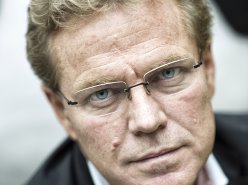
Biography
Arla-CEO Peder Tuborgh (50) started working for Arla straight after he finished school. He calls ending up with Arla ‘a coindicence’, and still working there ‘definitily not’. Since joining Arla Foods in 1987, Tuborgh has worked for Arla Foods’ subsidiaries in Germany and Saudi Arabia. He has a Bachelor’s in Economics from Odense University in 1985, Bachelor of Science from Odense University in 1985, Master of Science in Business Administration and Economics from Odense University in 1987. He has been the chief executive officer of Arla Foods since 2005.
Join 13,000+ subscribers
Subscribe to our newsletter to stay updated about all the need-to-know content in the dairy sector, two times a week.



